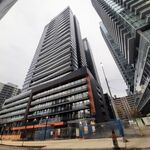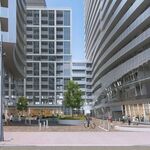Northern Light
Superstar
By restricting multi-family homes to arterials, this is the housing reality you will create, the mature state of which can be seen in North York Center.
View attachment 550083
You can see this further reflected in the school district boundaries where the Noble Elites of East Willowdale elected to keep the low-born suckers living in the condos along Yonge St, out of their Earl Haig, and send them to a high school much further away.
View attachment 550080
Anyone not wealthy enough to buy a SFH outright or fortunate enough to have parents who bought pre 2015, will only be able to afford a multi-family unit. And Multi-family units can only be built along Stroad Canyons like Yonge St between Sheppard and Finch.
Its ridiculous to suggest that garbage pickup for a multi-family home can't work because "small side streets can't fit them". Last time I checked, the garbage trucks that picked up big dumpsters and individual home owners trash bins were the same size and those "small side streets" seemed to have no problem fitting either.
If sewage and infrastructure were the primary constraining factors (instead of political backlash from NIMBY SFH owners) then big chunks of yellowbelt should be expropriated, demolished, the infrastructure redone in one go and upzoned massively.
Its the same old cowardly deference to landowners that has plagued Canadian urban planning for decades.
Evidence matters, cite studies and facts.
I'm not opposing multiplexes, in fact I made helped make them legal, my fingerprints are all over that.
My statements on infrastructure are correct. My political analysis is sound.
You think different on the former, prove it; you think different on the latter go get elected and see how that works for you.





